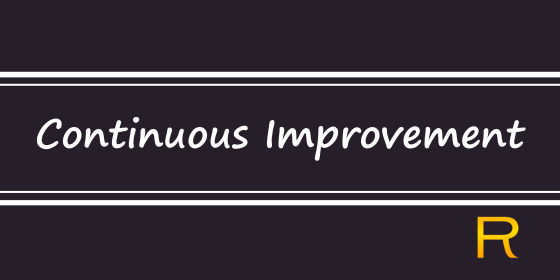Continuous Improvement

Continuous Improvement in the context of Business Agility refers to an ongoing process of making incremental enhancements and refinements to an organization’s products, services, processes, and practices. It is a fundamental principle of Agile methodologies and business agility, emphasizing the need for continuous learning, adaptation, and growth. Here’s an overview of continuous improvement, its associated benefits, and challenges:
Continuous Improvement is
- Iterative Approach: It involves regular cycles of assessment, reflection, adjustment, and implementation. Teams and organizations strive to identify areas for improvement and take action to address them continually.
- Data-Driven: Continuous improvement relies on data and feedback from various sources, including customers, stakeholders, and team members. This enables informed decision making about changes and enhancements.
- Embracing Change: It encourages a culture where change is an opportunity for growth rather than a disruption. Teams are open to experimentation and are willing to adapt based on the results of those experiments.
- Cross-Functional Collaboration: It often requires cross-functional collaboration and communication to identify improvement opportunities and implement changes effectively.
Benefits
- Enhanced Quality: Continuously improving processes and products leads to higher quality outcomes, reduced defects, and improved customer satisfaction.
- Greater Efficiency: Identifying and eliminating inefficiencies in workflows and practices can result in cost savings and resource optimization.
- Increased Innovation: Encouraging a culture of continuous improvement fosters creativity and innovation as teams seek better ways to do things.
- Better Risk Management: By proactively identifying and addressing issues, organizations can mitigate risks and respond more effectively to unexpected challenges.
- Employee Engagement: Employees are more engaged when they feel their input is valued, and they are actively contributing to the organization’s success through continuous improvement efforts.
Challenges
- Resistance to Change: Some individuals and teams may resist continuous improvement efforts due to fear of change, lack of understanding, or the belief that existing practices are sufficient.
- Resource Constraints: Implementing improvements can require time, effort, and resources, which may be limited in some organizations.
- Lack of Measurement and Feedback: Without robust data and feedback mechanisms, it can be challenging to identify areas for improvement and measure the impact of changes.
- Overemphasis on Small Details: Focusing excessively on minor improvements can lead to “analysis paralysis” and slow progress.
- Sustainability: Sustaining a culture of continuous improvement over the long term can be challenging, as complacency may set in after initial gains.
To successfully embrace continuous improvement in business agility, organizations must create an environment that encourages experimentation, values learning from failures, and empowers employees at all levels to contribute to the improvement process. By doing so, they can reap the benefits of increased adaptability, resilience, and competitiveness in today’s rapidly changing business landscape.